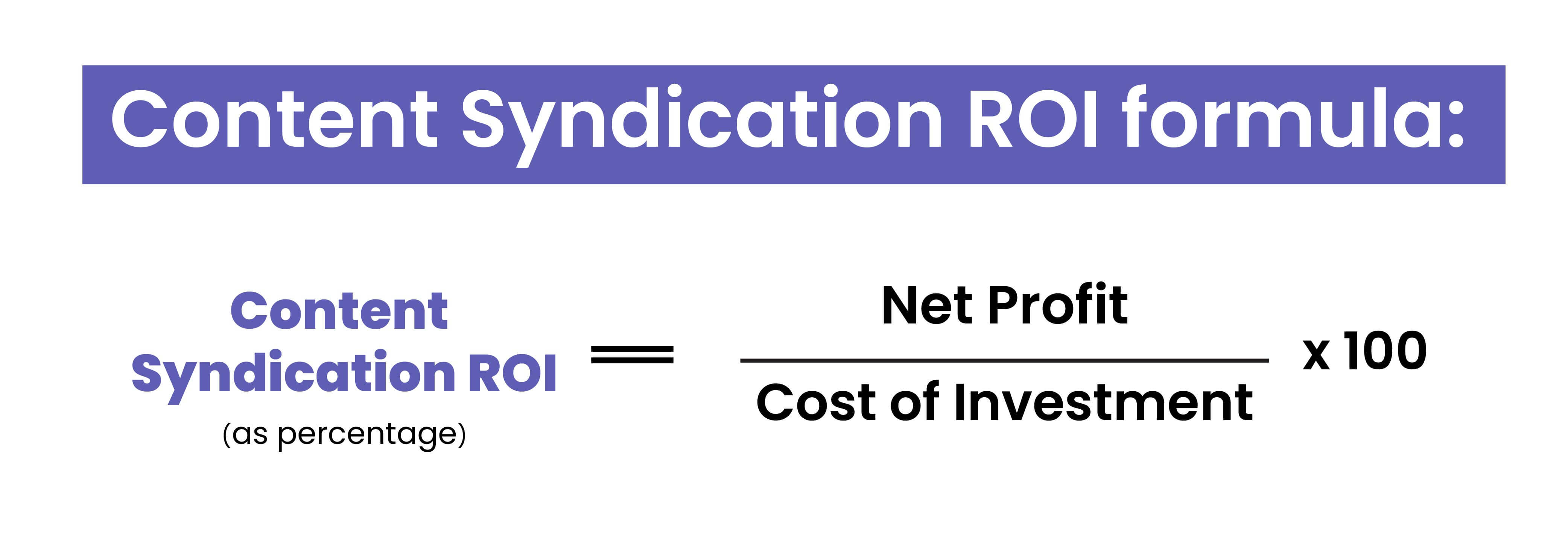After enormous research and weaving keywords for SEO, your content team creates a masterpiece tailored to your target audience. But what if your content doesn’t reach the right audience? It results in wasted efforts, money, and time.
Here is where content syndication comes into play. Whether it’s a blog post, infographic, video, case studies- syndicating your content via third-party sites allows it to reach more eyeballs and yield better results- expanding brand reach and visibility.
According to The Demand Gen Report, 67% of B2B buyers rely more on content to research and make purchasing decisions than a year ago.
However, like any other marketing campaign, content syndication also requires tracking ROI. But calculating the content syndication ROI can be tricky. Why? Because most of the returns are more qualitative in nature, such as lead quality or high-value prospects.
On the other hand, quantitative metrics can be measured in specific numbers. For example, the sales price of your product or service after engaging with your content.
What’s the challenge?
Most of the quantitative results aren’t immediate. For example, strategies like SEO can take around 6 to 12 months to show results.
Despite this, tracking ROI is important for several reasons:
- It helps you ascertain if you’re meeting the benchmarks and goals set for the campaign.
- It provides insights on the efficient use of your resources.
- It identifies the most productive channels for investment.
Must Read: B2B Content Syndication Platforms: Generate 10x More Leads & ROI
How to determine the Content Syndication Cost?
Calculating ROI starts with understanding the total costs incurred in setting up the content syndication campaign. These costs include content creators, in-house marketing fees, syndication platform fees, promotion, and marketing. Although the costs might appear initially high, surely in the long term it will generate significant revenue.
Key Metrics for Content Syndication:
Measuring content syndication results is not just about measuring ROI, it’s also about maximizing it. By measuring the metrics, you can continuously improve efforts to boost ROI. Here are a few important metrics to measure:
1. Website Traffic:
This includes the number of visitors your website receives from the content syndication campaign. Track website traffic using tools like Google Analytics.
2. Social Media Engagement:
This metric includes the number of likes, shares, and comments you receive on syndicated content. Tools such as Hootsuite and Social Sprout can help track social media engagement.
3. Lead Generation:
This includes the number of leads generated from syndicated content. Tools like HubSpot and Marketo can assist in tracking lead generation.
4. Revenue:
This entails the revenue generated from syndicated content. Tools such as Salesforce and NetSuite can be used to track revenue.
How to Calculate Content Syndication ROI?
Calculating the return on investment (ROI) for content syndication involves comparing the gains from the investment (revenue generated) to the cost of the investment (expenses incurred). Here’s content syndication ROI formula:

Where:
- Net Profit = Revenue Generated – Cost of Investment
- Cost of Investment = Content Creation Costs + Syndication Platform Fees + Marketing and Promotion Expenses
Let’s break down each component:
Net Profit:
This represents the revenue generated from content syndication minus the total costs incurred. It’s essential to track all revenue attributed to syndicated content, such as leads converted into sales, new customers acquired, or increases in overall revenue directly linked to syndication efforts.
Cost of Investment:
This includes all expenses associated with creating and promoting the syndicated content. It encompasses content creation costs (e.g., writer fees, graphic design), syndication platform fees, and any marketing or promotional expenses incurred to distribute the content effectively.
Once you have the values for net profit and the cost of investment, plug them into the ROI formula to determine the percentage return on your content syndication investment.
A positive ROI indicates that your syndication efforts are generating more revenue than the costs incurred, while a negative ROI suggests that your investment may not be yielding profitable returns.
Remember to track and analyze ROI regularly to assess the effectiveness of your content syndication strategy and adjust as needed to optimize performance and maximize ROI over time.
Strategies to Optimize Content Syndication ROI:
Setting Content Syndication Goals:
Before embarking on content syndication, define what you want to achieve from it. Determine your primary goals, such as increasing brand visibility, driving targeted traffic, generating qualified leads, and improving SEO.
Identify Your Target Audience:
Researching your target audience is key. Analyze demographics, buyer personas, customer data, and industry trends to tailor your content to address specific needs and preferences.
Curate High-Quality Content:
To fully reap the benefits of the campaign, assemble a quality content team. Create high-quality content pieces that provide readers with value and unique insights that resonate with the audience.
Establish Syndication Partnerships:
Once your content syndication is underway, it’s time to choose the syndication platform for distributing the content. Partner with platforms that align with your brand and target audience to maximize visibility and reach.
Remember, you can’t optimize what you don’t measure. To maximize the effectiveness of your content syndication efforts, whether in-house for free or with a content syndication vendor, it’s essential to track your campaign performance. This will help you determine if your efforts are contributing value to your bottom line.
Must Read – AI and Intent Data are Transforming B2B Content Syndication




